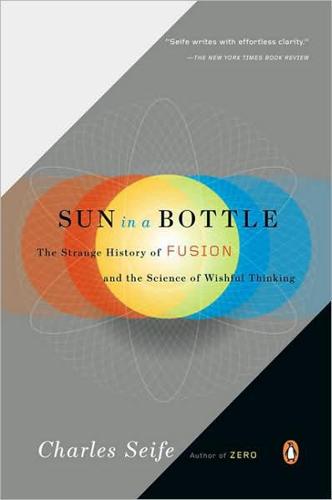
Sun in a Bottle: The Strange History of Fusion and the Science of Wishful Thinking
by
Charles Seife
Published 27 Oct 2009
Program No. 7 was not the only secret government project to harness the power of fusion. An equivalent program was already under way in the United States. A few years earlier, American scientists began work on Project Plowshare and started drawing up plans to use nuclear weapons to create an artificial harbor in Alaska, widen the Panama Canal, and dig a second Suez canal through Israel’s Negev desert. Project Plowshare and Program No. 7 were crude attempts to harness the power of fusion. Researchers quickly reasoned that if humans could learn to control the power of fusion, it could be the biggest boon that mankind has ever seen.
…
The nuclear bombs shattered rocks around the test site and natural gas poured out of the wells. Unfortunately, the gas was radioactive, and no utility would buy it. After twelve years of trying and twenty-seven nuclear tests, Project Plowshare sputtered to a halt without ever having proved the usefulness of peaceful nuclear bombs. Thirty years after Teller first dreamed of liberating the power of the sun upon the Earth, Project Plowshare was dead. Even the discovery of oil in Alaska in the late 1960s didn’t make his proposal of a bomb-carved harbor any more palatable. In his waning years, Teller turned away from peaceful nuclear explosions and back toward using fusion as a tool of war, dreaming up unworkable schemes to defend the United States from a Soviet missile attack.
…
Treaties with the Soviet Union were signs of weakness; detente and peacemaking would just lead to the destruction of America. Project Plowshare was a lie; to Teller, it was not a tool of peace but a means to undermine treaties with the Soviet Union. Teller was a man of swords, not plowshares. “I’ve never seen [Teller] take a position where there was the slightest chance in the interest of peace,” said Isidor Rabi. “I think he is the enemy of humanity.” Project No. 7 had a little more success than Project Plowshare. After the creation of Lake Chagan, the Soviets briefly experimented with nuclear excavations of lakes and dams, but the results were disappointing.
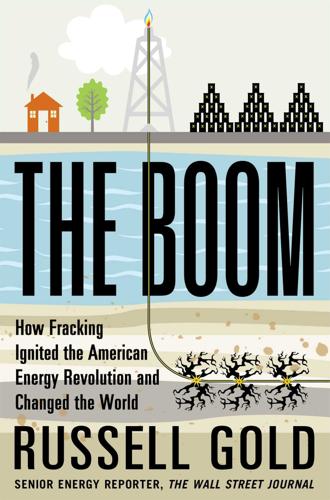
The Boom: How Fracking Ignited the American Energy Revolution and Changed the World
by
Russell Gold
Published 7 Apr 2014
The Plowshare scientists wanted to know whether using nuclear blasts to fracture rocks around wells would work and be cost effective. “Aspects outside the scope of a technical program—political, sociological, and psychological considerations—were not matters of AEC [Atomic Energy Commission] concern,” notes The Nuclear Impact: A Case Study of the Plowshare Program to Produce Gas by Underground Stimulation in the Rocky Mountains, a 1976 book about the program written by Frank Kreith and Catherine B. Wrenn. This oversight would doom nuclear fracturing, as would another problem. In 1967, scientists detonated a twenty-nine-kiloton bomb outside of Farmington, New Mexico.
…
Princeton, NJ: Princeton University Press, 1948. History of Petroleum Engineering. New York: American Petroleum Institute, 1961. Howard, George C., and C. Robert Fast. Hydraulic Fracturing. New York: Society of Petroleum Engineers of AIME, 1970. Kreith, Frank, and Catherine B. Wrenn. The Nuclear Impact: A Case Study of the Plowshare Program to Produce Gas by Underground Nuclear Stimulation in the Rocky Mountains. Boulder, CO: Westview Press, 1976. Lederer, Adam. “Using Public Policy Models to Evaluate Nuclear Stimulation Projects: Wagon Wheel in Wyoming.” Master’s diss., University of Wyoming, 1998. McLaurin, John J. Sketches in Crude-Oil: Some Accidents and Incidents of the Petroleum Development in All Parts of the Globe.
…
Edward Teller, a father of the hydrogen bomb, convened a meeting that year at the Lawrence Radiation Laboratory—now the Lawrence Berkeley National Laboratory—to discuss peaceful uses of nuclear power. Teller suggested it could be used for mining and excavation. The US Atomic Energy Commission agreed and created Project Plowshare, named after the biblical verse from the book of Isaiah: “And they shall beat their swords into plowshares, and their spears into pruning hooks.” The program focused first on using the power of the atom as a massive earthmover. The government toyed with the idea of using bombs to carve out a new deepwater harbor in Alaska and build a new canal through Panama.
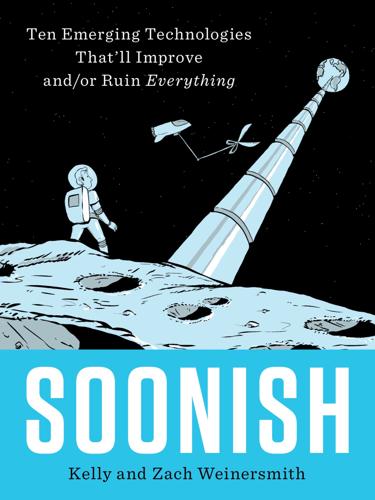
Soonish: Ten Emerging Technologies That'll Improve And/or Ruin Everything
by
Kelly Weinersmith
and
Zach Weinersmith
Published 16 Oct 2017
There are probably also a lot of hard-to-predict benefits of cheap energy. It would’ve been hard to imagine gasoline-powered cars by the millions back in the age of whale oil. Just the same, in this age of relatively expensive energy, we may not be able to see what wonders are over the horizon. Nota Bene on Project Plowshare It’s southeastern New Mexico, 1961. Dry, flat land with scattered scrubby plants. A place that has seen few humans over the past millennium is, this day, populated by United Nations representatives invited by the White House. They are here to witness an atomic explosion. Although it may have geopolitical implications, the point of this bomb is not war—it is to demonstrate that atomic bombs can be used for peaceful purposes, that the atomic sword can be beaten into a plowshare.
…
The salt will reach extremely high temperatures and become molten. You now have a huge volume of molten salt, which is an excellent way to retain heat. In theory, you can use that heat to make steam, drive turbines, and run your toaster. As in previous explosions under what came to be called Project Plowshare, this one produced an impressive shock wave and shook the dust from the desert ground. Then things got weird. When nuclear bombs are going off, you don’t want things to get weird. As scientists, reporters, military members, and government officials watched, a white vapor began to seep up from the blast site.
…
Yes indeed, a couple of friendly burrowing rodents (whose ultimate fate can probably be guessed) chewed through electric cables at the blast site, which took some of the radiation detectors off-line. As far as your authors know, this is the only known gopher-related nuclear accident, but it is nevertheless illustrative of why Project Plowshare never quite got off the ground. In theory, it was a beautiful idea: There are all sorts of uses to which massive, cheap explosions could be put—creating harbors, digging a new Panama Canal, and generating new elements. If this sounds crazy, that’s for two reasons: (1) It’s crazy, and (2) this was the age of nuclear optimism!
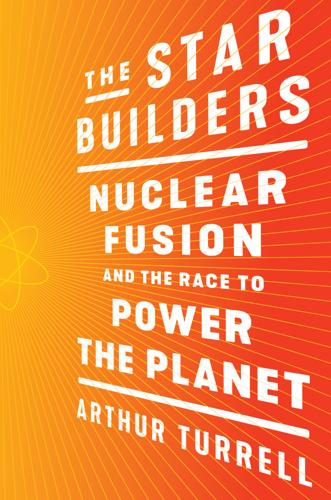
The Star Builders: Nuclear Fusion and the Race to Power the Planet
by
Arthur Turrell
Published 2 Aug 2021
While the best chemical rockets can achieve exhaust speeds of 4.5 kilometers (about 2.8 miles) per second, and nuclear fission might reach 8.5 kilometers per second, a working nuclear fusion reactor could potentially produce exhaust speeds of hundreds to thousands of kilometers per second.12 Sticking a fusion reactor on a spacecraft is, surprisingly, not the only fusion-spacecraft option out there. Project Orion was part of Edward Teller’s “Plowshare” program to turn nuclear weapons to peaceful purposesII and was co-led by physicist Freeman Dyson.13 It looked at chucking exploding hydrogen bombs out of the back end of a spacecraft to cause it to accelerate in the other direction. The scheme isn’t quite as insane as it may seem, and Dyson himself estimated that it could produce exhaust speeds of one thousand to ten thousand kilometers (approximately six hundred to six thousand miles) per second.
…
See National Ignition Facility Nuckolls, John, 67, 115–18, 120, 129 nuclear fission climate change solution using, 39–41, 216 deaths per exajoule for, 181 Einstein’s theory on, 58 problems using, 40–41 public support for using, 40 regulatory considerations for, 40–41 renewables used with, 41 nuclear fission reactors meltdown possibilities for, 168 potential for nuclear weapon creation related to, 40, 167 nuclear fusion arguments for using, 42 availability of two reactants needed for, 43 Big Bang and, 72–73, 149, 186 carbon dioxide emissions using, 42 carbon-nitrogen-oxygen (CNO) cycle and, 79–80 climate change solution using, 45, 46–47, 199–200 confinement and, 68, 69 costs of, 200–7 density and, 68, 69 development timeline for, 45–46, 183, 185 difficulty of getting net energy from, 61–64 early ideas about, 8–9 end of life stars and, 83–86 energy crisis solution using, 41–46 energy released in, 58–59 energy security and access to, 42–43 engineers and technological challenge of, 139 four fundamental forces of nature affecting, 59–61, 96 ignition in, 92 land area needed for, 42 Lawson’s theory and equations on conditions for, 108–10, 113, 129, 130, 132, 142, 156, 193–94 magnetic fields for plasma confinement during, 95–102, 110, 111 motivations for working with, 45 number of years left for supply of, if used exclusively, 43–45 plasma control devices in, 185 plasma physics understanding of factors in, 67–69 progress made in, 183–86 public support for using, 40 Q measure in, 92, 100, 105, 107–8, 183–84 renewables used with, 41–42 risks in using, 42–43 Rutherford’s first artificial nuclear reaction and, 53 stars and, 77–83 temperature and, 64–65, 68, 69 trapping hot hydrogen for, 95–106 nuclear fusion energy high temperatures needed for production of, 91–95 private sector and, 143–44 star power and, 47 nuclear fusion reactors hydrogen bombs compared with, 8, 166, 167 low level of risk associated with, 168–69, 180 meltdown possibilities for, 168 plasma turbulence problem in, 67, 81 potential for nuclear weapon creation related to, 42, 166–67 nuclear weapons Halite-Centurion experiments with, 131, 190–91 nuclear fission and potential for proliferation of, 40, 167 nuclear fusion power plants and potential for creation of, 42, 166–67 Teller’s “Plowshare” program for, 214 oil. See also fossil fuels energy security and access to, 42–43 number of years left for supply of, if used exclusively, 43–44 Oishi, Matashichi, 161–63 Oliphant, Mark, 54–55, 149 Pickworth, Louisa, 126–29, 130, 132, 119, 158 pinch effect, 97, 149 Pisanello, Gianluca, 136–38 pistol shrimp shock waves Hawker’s computer simulation of shock waves made by, 134 noise generation by, 133–34 piston design, at General Fusion, 145–46 Pitt, Brad, 13 plasmas, 64–69 atom structure in, 64–65 confinement and, 68, 69 control devices for, 185 density and, 68, 69 energy release in nuclear reactions and, 65–66 need for more research on, 66–69 temperature and, 64–65, 68, 69 “Plowshare” program, 214 population growth, and energy consumption, 29–30 Post, Richard, 11 power plants DEMO plans for, 197, 198, 199, 206 LIFE prototype for, 199, 206 Project Orion, 214 Proton Scientific, 143 public-private partnerships, 13, 159–60 Pulsar Fusion, 143, 144 Q measure commercial energy production and, 142–43 definition of, 92 ITER tokamak and, 188 JET reactor using, 92, 100, 105, 107–8, 183–84 types of, 92 quenching, 141 Rabi, Isidor, 161 radiation exposure, in hydrogen bomb testing, 163, 174 radioactive carbon-14 dating, 173 radioactive waste fission power and, 11–12, 40, 42 nuclear fusion and, 42 radio telescopes, 76–77 Rayleigh-Taylor instability, 129–30, 145–46 Renaissance Fusion, 24, 143 renewable energy British government projection of use of, 37–38 competitive forms of, 207 costs of, 207 diffusion problem using, 37 energy crisis solution using, 36–39, 46 environmental changes and, 210 intermittent energy generation with, 37, 38, 39 land area needed for, 37 nuclear fusion used with, 41–42 projection of global share of energy using, 39 public support for using, 40 scale problems with, 37 world energy consumption and, 34 Rimini, Fernanda, 41–42, 98–99, 102–3, 108 robotics, 41–42, 106, 119, 212 Rose, Steve, 131 Rosenbluth, Marshall, 11 Russia fusion funding by, 13, 14 ITER tokamak, Cadarache, France, and, 186–87 laser fusion facility in, 192 net energy gain goal and, 192 T-3 tokamak in, 184 Rutherford, Ernest, 49–51, 52–55, 173 atom model developed by, 50–51, 52 background of, 49–50 deuterium experiment leading to discovery of nuclear fusion by, 54–55, 61, 149 early experiments on radioactive substances by, 171 first artificial nuclear reaction performed by, 53, 61 heavy hydrogen (deuterium) experiment of, 54–55 importance of early experiments smashing particles by, 52–53 on inefficiency of early nuclear experiments, 62 on laboratory work, 122 producing energy by particle smashing and, 62, 63 splitting lithium atoms to produce energy experiment by, 53–54 Sandia National Laboratory, New Mexico, 157–59, 190 sawtooth instability, in tokamaks, 103–4 Shenguang III megajoule laser, China, 14, 193 Siemens, Werner von, 133 Sierra supercomputer, 189 simulations, 10, 23, 185, 188 solar power.
…
See also fossil fuels energy security and access to, 42–43 number of years left for supply of, if used exclusively, 43–44 Oishi, Matashichi, 161–63 Oliphant, Mark, 54–55, 149 Pickworth, Louisa, 126–29, 130, 132, 119, 158 pinch effect, 97, 149 Pisanello, Gianluca, 136–38 pistol shrimp shock waves Hawker’s computer simulation of shock waves made by, 134 noise generation by, 133–34 piston design, at General Fusion, 145–46 Pitt, Brad, 13 plasmas, 64–69 atom structure in, 64–65 confinement and, 68, 69 control devices for, 185 density and, 68, 69 energy release in nuclear reactions and, 65–66 need for more research on, 66–69 temperature and, 64–65, 68, 69 “Plowshare” program, 214 population growth, and energy consumption, 29–30 Post, Richard, 11 power plants DEMO plans for, 197, 198, 199, 206 LIFE prototype for, 199, 206 Project Orion, 214 Proton Scientific, 143 public-private partnerships, 13, 159–60 Pulsar Fusion, 143, 144 Q measure commercial energy production and, 142–43 definition of, 92 ITER tokamak and, 188 JET reactor using, 92, 100, 105, 107–8, 183–84 types of, 92 quenching, 141 Rabi, Isidor, 161 radiation exposure, in hydrogen bomb testing, 163, 174 radioactive carbon-14 dating, 173 radioactive waste fission power and, 11–12, 40, 42 nuclear fusion and, 42 radio telescopes, 76–77 Rayleigh-Taylor instability, 129–30, 145–46 Renaissance Fusion, 24, 143 renewable energy British government projection of use of, 37–38 competitive forms of, 207 costs of, 207 diffusion problem using, 37 energy crisis solution using, 36–39, 46 environmental changes and, 210 intermittent energy generation with, 37, 38, 39 land area needed for, 37 nuclear fusion used with, 41–42 projection of global share of energy using, 39 public support for using, 40 scale problems with, 37 world energy consumption and, 34 Rimini, Fernanda, 41–42, 98–99, 102–3, 108 robotics, 41–42, 106, 119, 212 Rose, Steve, 131 Rosenbluth, Marshall, 11 Russia fusion funding by, 13, 14 ITER tokamak, Cadarache, France, and, 186–87 laser fusion facility in, 192 net energy gain goal and, 192 T-3 tokamak in, 184 Rutherford, Ernest, 49–51, 52–55, 173 atom model developed by, 50–51, 52 background of, 49–50 deuterium experiment leading to discovery of nuclear fusion by, 54–55, 61, 149 early experiments on radioactive substances by, 171 first artificial nuclear reaction performed by, 53, 61 heavy hydrogen (deuterium) experiment of, 54–55 importance of early experiments smashing particles by, 52–53 on inefficiency of early nuclear experiments, 62 on laboratory work, 122 producing energy by particle smashing and, 62, 63 splitting lithium atoms to produce energy experiment by, 53–54 Sandia National Laboratory, New Mexico, 157–59, 190 sawtooth instability, in tokamaks, 103–4 Shenguang III megajoule laser, China, 14, 193 Siemens, Werner von, 133 Sierra supercomputer, 189 simulations, 10, 23, 185, 188 solar power.
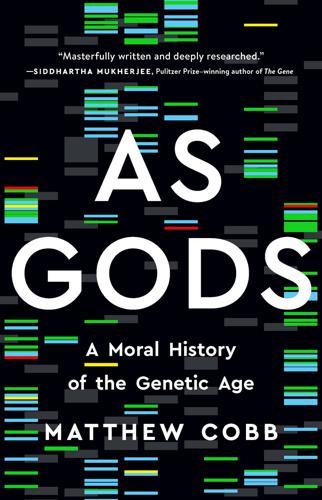
As Gods: A Moral History of the Genetic Age
by
Matthew Cobb
Published 15 Nov 2022
In the United States there were repeated attempts to develop the peaceful use of nuclear weapons through Project Plowshare, in which nuclear bombs would gouge out new harbours in Alaska and Australia or even blast a new sea-level Panama Canal that would directly link the Atlantic and Pacific Oceans (this would have required anywhere between 185 and 925 explosions, depending on the route).13 Devised by Manhattan Project veteran and ‘father of the hydrogen bomb’ Edward Teller, Project Plowshare carried out twenty-seven test detonations between 1957 and 1973 (it was finally defunded in 1975), leaving 100-metre-deep craters and ejecting debris nearly five kilometres into the atmosphere.
…
Moore, K. (2008), Disrupting Science: Social Movements, Americans Scientists, and the Politics of the Military, 1945–1975 (Princeton, Princeton University Press). 12 Ezrahi, Y., et al. (eds) (1994), Technology, Pessimism and Postmodernism (Dordrecht, Springer). 13 For details of Project Plowshare, see for example: O’Neill, D. (1994), The Firecracker Boys: H-Bombs, Inupiat Eskimos and the Roots of the Environmental Movement (New York, Basic Books) and Kaufmann, S. (2013), Project Plowshare: The Peaceful Use of Nuclear Explosives in Cold War America (London, Cornell University Press). 14 Frum, D. (2000), How We Got Here. The 70s: The Decade That Brought You Modern Life (For Better or Worse) (New York, Basic Books). 15 Meselson, M. (2017), in B.
…
A year after publishing Dune, science fiction writer Frank Herbert combined the themes of Brave New World with the new sensibility of suspicion in The Eyes of Heisenberg (1966) in which an immortal elite used genetic manipulation to control the behaviour of the human population. Non-fiction also pursued similar alarming themes. Science and Survival, published in 1966 by cell biologist Barry Commoner, who had played a key role in the opposition to Project Plowshare, helped to lay the basis for the US environmentalist movement, with its critique of industrial and technological development, frequently spiced with urban fantasies about the attractiveness of country living. Books such as Barbara Ward’s Spaceship Earth (1966) sought the solution to the ills they diagnosed not in more growth or smarter technology but in fundamental changes to the way in which society worked.

Accessory to War: The Unspoken Alliance Between Astrophysics and the Military
by
Neil Degrasse Tyson
and
Avis Lang
Published 10 Sep 2018
As nuclear culture developed, images of the atom associated with myriad applications for peaceful purposes and the betterment of humankind supplanted those of nuclear weapons” (298). “Soviet engineers also spoke hopefully about . . . using peaceful nuclear explosions (PNEs) ‘to increase man’s control over the environment,’ just as in the United States where plans for ‘Project Plowshares’ included nuclear detonations for a plowshare harbor at Ogoturuk, Alaska, and for the ‘Panatomic Canal’ at the Panamanian isthmus” (306). Josephson quotes the overblown claims of US nuclear physicist Edward Teller, father of the hydrogen bomb and of America’s PNE program—“ ‘We can build harbors, dig sea level canals, deflect rivers, throw off overburden from deep mineral deposits, and thereby increase our wealth and the wealth of other nations.
…
The explosives can operate in a very clean way’ ”—and asks “why would the USSR treat the promise of PNEs any differently than the United States?” (306). See also Ed Regis, “What Could Go Wrong? The Insane 1950s Plan to Use H-bombs to Make Roads and Redirect Rivers,” Slate, Sept. 30, 2015, www.slate.com/articles/technology/future_tense/2015/09/project_plowshare_the_1950s_plan_to_use_nukes_to_make_roads_and_redirect.html (accessed Apr. 25, 2017). 134.Doel and Harper, “Prometheus Unleashed,” 66–85. Also see, e.g., Lyndon B. Johnson, “Special Message to the Congress on Conservation and Restoration of Natural Beauty,” Feb. 8, 1965, at Gerhard Peters and John T.
…
., 152–53 Dyna-Soar spaceplane, 279 Earth-observation satellites, see remote-sensing satellites Eastman Dry Plate and Film Company, 144 Eastman Kodak, 203, 205 Ebertin, Elsbeth, 57–58, 61 Echo communication satellite, 278 eclipses and ancient astronomy, 44–49, 423–24n cycle of lunar eclipses, 56 daguerreotype of solar eclipse, 144 effects on history, 45–49 evidence of Earth’s slowing rotation, 46 Eddington, Arthur, 400–401 Edison, Thomas Alva, 220 education in science and engineering decline in US share of degrees, 22, 31 reaction to Sputnik launch, 270, 490n Egypt ancient astronomy, 39, 40, 42 early ships, 68, 432n Nabta Playa, 42 pyramids at Giza, 42 solar calendar with 365 days, 40, 422–23n Einstein, Albert, 182, 215, 218 Eisenhower, Dwight D. Atoms for Peace, 287, 498–99n on military-industrial complex, 26, 161, 404 military space budget, 282 military space efforts, 273–74, 278–79 moratorium on nuclear testing, 307 presidential exit speech, 26, 161 Project Plowshare, 287, 499n proposed ban on weapons in space, 281 quest for both peace and preparedness, 275–78, 493–94n satellite proposals, 267, 271, 488n, 491n science advisor appointed, 269, 491n Supreme Allied Commander in Europe, 269, 275 Vela Hotel satellites and, 216 electric telegraphs, 118, 123 electromagnetic pulse, 290 electromagnetic spectrum, 100–101, 168–69, 170–71, 199–200, 209, 213–14 Elements of Geometry (Euclid), 44, 107 elements, origin of, 400–403 Ellsberg, Daniel, 248 empire building American empire, 34–36 by Portuguese, 81, 83–84, 87–88 and science, in eighteenth century, 90–91, 95, 439n in seventeenth century, 90 by Spain, 87–88 Enceladus, 196–97 Energiya, 359, 363 Energomash, 363 England, warfare in seventeenth century, 108–9, 443–44n Enlargement of the Committee on the Peaceful Uses of Outer Space, 502n Enola Gay, 457n entanglement (photons), 313, 351 ephemerides, 82, 94 Eratosthenes, 87, 434n, 437n Euclid, 44, 107 Eudoxus of Cnidus, 71, 72, 73 European Defence Agency, 327 European Geostationary Navigation Overlay Service (EGNOS), 328 European Launcher Development Organisation, 326 European Space Agency ACES (Atomic Clock Ensemble in Space), 339 collaboration with China, 377 collaboration with Russia, 364 Columbus laboratory linked to ISS, 368 nonmilitary mandate, 326–27, 329–30 recent successes, 32 science spending, 520n, 533n space weather prediction, 160–61 weather satellites, 341 European Space Research Organisation, 326 European Union code of space conduct, 397 Common Security and Defence Policy, 327 military spending, 327, 512n nonmilitary interest in space, 22, 326–27 reliance on soft power, 326 space spending, 329 “Space Strategy for Europe,” 328–29 stability as vital goal, 325–26 terrorist attacks, 327 on threats to global security, 14 ExoMars, 364 exoplanets, detection of, 175, 399 Experiments and Observations on Electricity (Franklin), 123 Explorer 1 satellite, 269 Explorer XI satellite, 213–14 exports of military space systems, 300, 505n eye (human), abilities and limitations of, 100–101 Fair Housing Act of 1968, 288 FAST (Five-hundred-meter Aperture Spherical Telescope), 182 “Fat Man” (Nagasaki), 303, 307, 505n Fermi Gamma-ray Space Telescope (NASA), 199 financial crisis of 2008–2009, 3–4 Finnish Meteorological Institute, 385 First Battle of Bull Run, 124, 448n, 449n first use of nuclear weapons, as option, 308, 309 Five D’s: deception, disruption, denial, degradation, and destruction, 322 Fizeau, Armand-Hippolyte-Louis, 144 Flamsteed, John, 52, 94 FOBS (Fractional Orbital Bombardment System), 286 F-117A stealth fighter, 197, 198, 332, 470n, 514n food for mariners, 84–85 Food Stamps Act of 1964, 288 Fort Sumter, 124 Foucault, Jean-Bernard-Léon, 92, 133, 144 Fowler, William, 402 Fox Talbot, William Henry, 142, 455n Franklin, Benjamin, 112, 123 Fraunhofer, Joseph von, 146 Fraunhofer lines, 146, 147 Frederick the Great, 111, 130, 446n “freedom of space” issue after Sputnik, 268–69, 301, 505n frequency, defined, 100 Frisius, Regnier Gemma, 95, 441n Fugate, Robert, 155 Fukushima nuclear disaster, 255 Furst, Luther C., 449n fusion bombs, 304, 389, 390, 391, 474n fusion in stars, 304, 389, 390, 391, 400 Gagarin, Yuri, 157, 264, 282 Galaxy IV satellite failure, 478n Galbraith, John Kenneth, 55 Galilei, Galileo astrology, 49, 52–53 discoveries with telescopes, 52, 103, 109–10 drawings, 141, 202, 455n patronage and telescopes, 105–6, 160, 173, 442–43n telescope construction, 102, 107, 110, 441–42n Galileo global positioning system, 160, 329, 337 GAMBIT (KH-8) satellites, 205 gamma-ray bursts, 214–15, 217, 473–74nn gamma rays detection of, 199, 213–18 discovery of, 171, 213 Earth’s atmosphere and, 214 generation by cosmic rays, 218 Garwin, Richard L., 249, 250–51, 377, 482n, 485n General Dynamics, 11, 18 Generall Historie of Virginia (Smith), 436n general theory of relativity, 182 geodetic meridian, 99 Geographike Hyphegesis (Ptolemy), 50, 78, 85, 86, 87 George III (king), 96 geostationary orbit (GEO), 278–79, 494n Germany air war against in World War II, 189–90 export and manufacturing after World War I, 137–39, 453n, 454nn exports before World War I, 137, 453n radar development, 186, 465n rearming in 1930s, 186 withdrawal from the League of Nations, 139 Gettysburg, 126–27, 449nn Giacconi, Riccardo, 225, 226 Giant Metrewave Radio Telescope, 182–83 glass, 131 see also optical glass Glaucon, 46 global GDP, 403, 533n Global Positioning System (GPS) accuracy and precision, 332, 333, 336–37, 513n Air Force control of, 158, 337 Beidou system (China), 337 cruise missiles and, 332, 346 in first Gulf War, 332–36 funding, 337, 516n Galileo system (EU), 160, 329, 337 and geodetic meridian, 99 GLONASS system (Russia), 160, 337–38, 362, 363, 516n GPS III, 337 ionosphere and, 333 in Iraq War, 336, 346, 348 jamming of, 333, 515n, 516n NAVSTAR Global Positioning System, 278, 332, 335–36 overview, 158, 332–33, 339–40 selective availability, 336 smart bombs and, 335 global security, 14–15 GLONASS global positioning system, 160, 337–38, 362, 363, 516n GNSS (global navigation satellite systems), 337 Goddard, Robert, 192 Goebbels, Paul Joseph, 58, 59, 60, 61–62, 428n, 429n Goerner, F.
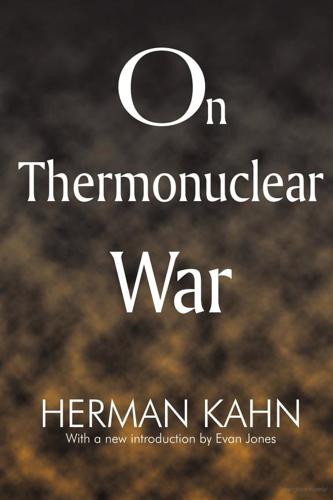
On Thermonuclear War
by
Herman Kahn
Published 16 Jul 2007
For whatever it is worth, the author of this book views the spread of nuclear weapons with the gravest apprehension. Some of the reasons for this feeling are given on pages 491 to 494. While I agree with the notion that we will not be able to control the diffusion of weapons over the next 50 years by the kinds of social, legal, and political barriers which have been erected against Project Plowshare, and which are likely to be erected by normal negotiations, such barriers can effect 5-, 10-, and 20-year delays. It is simply my judgment that if we can buy such time, it is worth buying. We will then be better able to anticipate problems and set up arrangements ahead of time. This small number of missiles will of course be supplemented by quite a force of manned bombers that will have in their bombbays a great deal more megatons than the missiles have in their warheads.
…
If these other countries can, in fact, get access to super-fuels, their strategic capability would become an order of magnitude more threatening. Some form of climate- and weather control should be more available in 1965. The Argus effect that has been receiving much prominence at this writing is an example of a current ability at a kind of weather control. Project Plowshare has made some systematic studies on the use of nuclear explosives to modify both weather and climate. In the fifth volume of the Proceedings of the Second Plowshare Symposium (UCRL-5679), J. W. Reed speculates on the possibility that we will be able to control hurricanes by the use of 20 MT clean (relatively nonradioactive) bombs, and L.
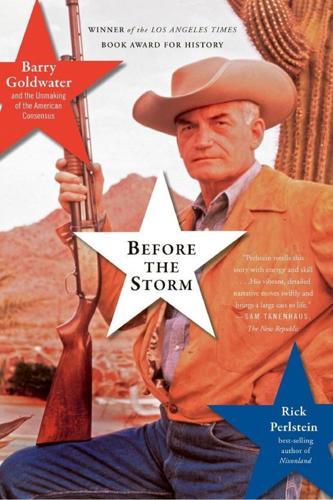
Before the Storm: Barry Goldwater and the Unmaking of the American Consensus
by
Rick Perlstein
Published 17 Mar 2009
Within hours of the bombing of Hiroshima, the Washington Press Club had an “Atomic Cocktail” on offer; no one blanched at naming a sexy new bathing suit after an atoll that had been nearly wiped from the Earth in a hydrogen bomb test in 1952. That same year, in fact, an airborne nuclear test was broadcast on TV to Chet Huntley’s thrilled commentary. Casinos scheduled outings to watch tests at the Atomic Energy Commission Proving Grounds northwest of Las Vegas. The AEC’s propagandistic “Project Plowshare” produced glowing stories of the possibilities of using nuclear devices to carve a new canal in Central America and a new harbor in Alaska. The bomb was something to be proud of. It protected us. Its more imminent dangers were only discussed behind scientists’ closed doors. Atomic testing began showing a darker face in the mid-1950s, when physicist Ralph Lapp and chemist Linus Pauling began publishing widely on the dangers of “nuclear fallout,” a mysterious toxin that “cannot be felt and possesses the terror of the unknown”—although it was known that it was released in the air in tests, was linked to cancer and genetic damage, and had a half-life of twenty-eight years.
…
Mary McGrory followed Goldwater back to Washington: Time, September 27, 1963. 231 On the American friendship with the atom, see Allan M. Winkler, Life Under a Cloud: American Anxiety About the Atom (New York: Oxford University Press, 1993), 27-28. For airborne test broadcast, see ibid., 91. For Project Plowshare, see Dan O’Neill, The Firecracker Boys (New York: St. Martin’s Press, 1994). 231 For public awareness of nuclear fallout, see Winkler, Life Under a Cloud, 84-108; Ralph E. Lapp, “Civil Defense Faces New Perils” (1954), and W.K. Wynant Jr., “50,000 Baby Teeth” (1959), both in Robert C. Williams and Philip L.
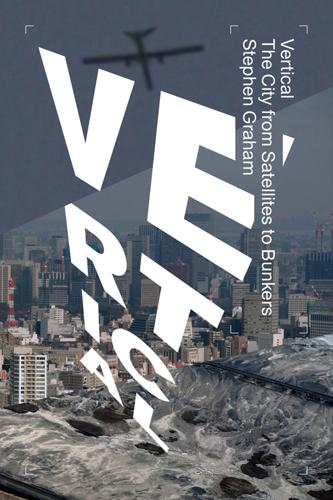
Vertical: The City From Satellites to Bunkers
by
Stephen Graham
Published 8 Nov 2016
.: Yale University Press, 2003, p. 234. 25Quoted in Alex Marshall, Beneath the Metropolis: The Secret Lives of Cities, New York: Carroll & Graf, 2006, p. 56. 26Maja Gori, ‘The Stones of Contention: The Role of Archaeological Heritage in the Israeli–Palestinian Conflict’, Archaeologies 9:1, 2013, p. 223. 27Eyal Weizman, ‘The Politics of Verticality: Excavating Sacredness’, Open Democracy, 28 April 2002, available at opendemocracy.net. 28Cited in Gori, ‘Stones of Contention’, p. 226. 29Weizman, ‘Politics of Verticality’. 30See Chiara De Cesari, ‘Hebron, or Heritage as Technology of Life’, Jerusalem Quarterly 41, 2010, pp. 6–28. 31Scott Kirsch, Proving Grounds: Project Plowshare and the Unrealized Dream of Nuclear Earthmoving, New York: Rutgers University Press, 2005. 32See Brian Hudson, Cities on the Shore: The Urban Littoral Frontier, London: Pinter, 1996. 33Réné Kolman, ‘New Land in the Water: Economically and Socially, Land Reclamation Pays’, Terra et Aqua 128, September 2012. 34Lizette Alvarez, ‘Where Sand Is Gold, the Reserves Are Running Dry’, New York Times, 24 August 2013. 35Sand is also necessary to produce glass, the concrete used in vertical construction, and in high-tech industries. 36Joshua Comaroff, ‘Built on Sand: Singapore and the New State of Risk’, Harvard Design Magazine 39, 2014, p. 138. 37Peduzzi, ‘Sand, Rarer Than One Thinks’. 38Maria Franke, ‘When One Country’s Land Gain Is Another Country’s Land Loss’, Working Paper No. 36, Institute for International Political Economy, Berlin, 2014, available at ideas.repec.org. 39Comaroff, ‘Built on Sand’. 40See Denis Deletrac’s 2012 documentary at sand-wars.com. 41See Fazlin Abdullah and Goh Ann Tat, ‘The Dirty Business of Sand: Sand Dredging in Cambodia’, Lee Kuan Yew School of Public Policy, National University of Singapore, 2012, available at http://lkyspp.nus.edu.sg. 42The $60 billion debt the project created for the developer, Dubai World, was a major reason that forced Dubai to go to its rich Emirati neighbour, Abu Dhabi, for a $10 billion bailout in 2008. 43Adam Luck, ‘How Dubai’s $14bn Dream to Build The World Is Falling Apart’, Daily Mail, 11 April 2010. 44Mark Jackson and Veronica Della Dora, ‘“Dreams So Big Only the Sea Can Hold Them”: Man-Made Islands as Cultural Icons, Travelling Visions, and Anxious Spaces’, Environment and Planning A 41:9, 2009, p. 2092. 45Jacks and della Dora ‘“Dreams so big only the sea can hold them” ‘, p. 2088. 46Dia Saleh, ‘Bahrain: An Island without Sea’, Arteast, Fall 2013, available at arteeast.org. 47Martin Lukacs, ‘New, Privatized African City Heralds Climate Apartheid’, Guardian, 21 January 2014. 48Asian Maritime Transparency Initiative, Mischief Reef, January 2015, at amti.csis.org/mischief-reef/. 49See John Burt, ‘The Environmental Costs of Coastal Urbanization in the Arabian Gulf’, City 18:6, 2014, pp. 760–70; Paul Erftemeijer et al., ‘Environmental Impacts of Dredging and Other Sediment Disturbances on Corals: A Review’, Marine Pollution Bulletin 64:9, 2012, pp. 1737–65. 50‘No Place to Land: Loss of Natural Habitats Threatens Migratory Birds Globally’, New York: United Nations Environment Programme, 2011. 51Susan Strasser, Waste and Want: A Social History of Trash, New York: Macmillan, 1999, p. 15. 52Cinzia Scarpino, ‘Ground Zero/Fresh Kills: Cataloguing Ruins, Garbage, and Memory’, Altre Modernità, 2011, pp. 237–53. 53Daniel Hoornweg and Perinaz Bhada-Tata, ‘What a Waste: A Global Review’, Urban Development Series 2012, no. 15, Washington, DC: World Bank, March 2012. 54Thelma Gutierrez and George Webster, ‘Trash City: Inside America’s Largest Landfill Site’, CNN, Atlanta, 2012. 55See Rodney Harrison and John Schofield, After Modernity: Archaeological Approaches to the Contemporary Past, Oxford: Oxford University Press, 2010. 56Quoted in Thelma Gutierrez ‘Trash City: Inside America’s Largest Landfill Site’, available at cnn.com, 28 April 2012. 57‘Street Children, India’, 2006, available at gvnet.com. 58Dave Petley, ‘Garbage Dump Landslides’, American Geophysical Union Blog, 22 June 2008, available at blogs.agu.org. 59Quoted in Petley, ‘Garbage Dump Landslides’. 60Karl Mathiesen, ‘Is the Shenzhen Landslide the First of Many More?’
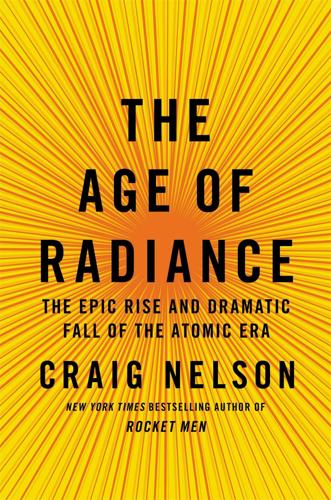
The Age of Radiance: The Epic Rise and Dramatic Fall of the Atomic Era
by
Craig Nelson
Published 25 Mar 2014
Featuring Raytheon’s Radarange (the first commercially available microwave oven), NS Savannah was christened by first lady Mamie on July 21, 1959, and, when it docked in New York City, inspired a “Nuclear Week” of educational events, which included two episodes of the Tonight show. Joining the Atoms for Peace agenda with his Plowshare Program was none other than Edward Teller, who studied the use of fusion bombs to dredge harbors and canals, nuclear explosions for fracking shale oil fields, and firing a nuclear rocket into the moon. This last proposal, Teller said, was to “observe what kind of disturbance it might cause.” He told the University of Alaska in 1959, “If your mountain is not in the right place, just drop us a card” and “We’re going to work miracles.”
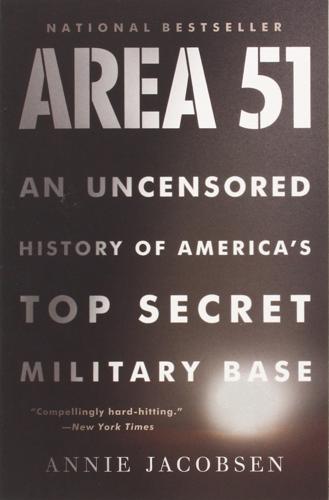
Area 51: An Uncensored History of America's Top Secret Military Base
by
Annie Jacobsen
Published 16 May 2011
In addition to weapons tests, the nuclear laboratories were racing to find ways to use nuclear bombs for “peaceful applications.” This included ideas like widening the Panama Canal or blowing up America’s natural geography to make room for future highways and homes. These proposed earthmoving projects fell under the rubric of Project Plowshares, a name chosen from a verse in the Old Testament, Micah 4:3: And they shall beat their swords into plowshares and their spears into pruning hooks: nations shall not lift up sword against nation, neither shall they learn war anymore. But that was just semantics. Test ban treaty or not, the Department of Defense had no intention of putting down its swords.
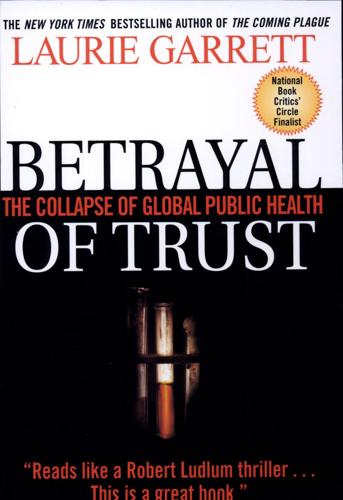
Betrayal of Trust: The Collapse of Global Public Health
by
Laurie Garrett
Published 15 Feb 2000
., “Bio-weapons in mind, Iranians lure needy ex-Soviet scientists. New York Times (December 8, 1998): Al; Broad, W. J., “Iranian denies seeking biological arms in Russian.” New York Times (December 12, 1998): A3; and Miller, J., “Russian biologist denies work in Iran on germ weapons.” New York Times (January 19, 1997): A7. 69. Miller, J., “Bombs-to-plowshares program criticized.” New York Times (February 22, 1999): A8; Stout, D., “U.S. imposes sanctions on tech labs in Russia.” New York Times (January 13, 1999): A7; and Miller, J. and Broad, W. J., “Germ weapons: In Soviet past or in the new Russia’s future?” New York Times (December 28, 1998): Al. 70.